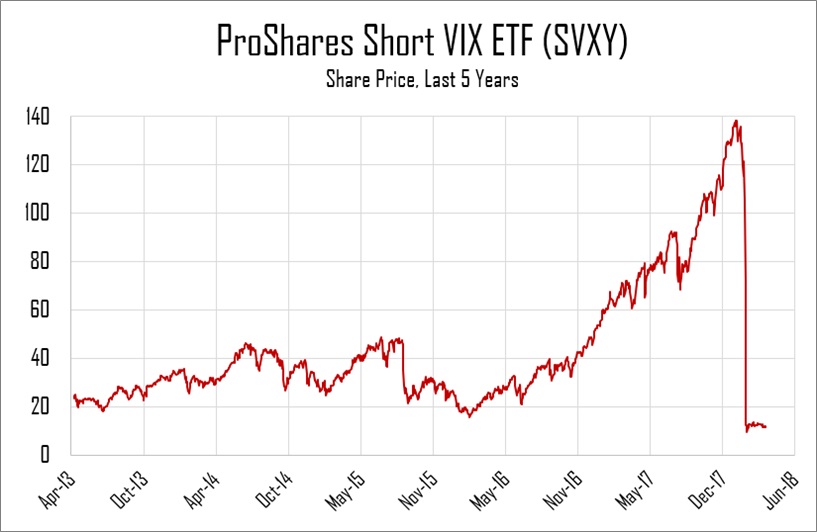In our Q4 2017 newsletter, we noted that the market had entered into an almost unprecedented period of market calm, at least as measured by one major measure of market volatility. We wrote then: “the CBOE S&P 500 Volatility Index (VIX), often simplistically referred to as the market’s ‘fear gauge’, closed below 10.00 for 10 consecutive trading days in July, marking the longest such streak in the history of the index. In fact, since the index was first calculated in 1990, there had been only 9 combined days in 27 years on which the index closed in single digits—just since May, there have now been 29 such days in 2017 alone, making it clear that we are now in uncharted territory from a volatility standpoint.”
Indeed, according to data from the St. Louis Fed, there were a total of 52 sub-10 VIX readings in 2017 (and 7 more in January), making such days seem more like the norm than an exception. Not surprisingly, some profit-seeking investors (and fund managers) began to capitalize on the market’s newfound low-volatility state, structuring bets that would pay off when the VIX was low and/or continued to decline. These “short-volatility” products were, in fact, among the strongest performing investments in 2017—the ProShares Short VIX Short-Term Futures ETF (SVXY) gained more than 180% over the course of the year, as market volatility remained conspicuously absent. But when the market swiftly corrected, the VIX followed suit; in less than a week, the index spiked from a low of 12.50 to a high above 50, nearly quadrupling in just a few days’ time.
Naturally, the products that were designed to bet against exactly this kind of event suffered greatly. The aforementioned ProShares product (SVXY) lost more than 80% of its value in just one day (and more than 90% in a week), and it remained at those depressed levels throughout the remainder of the quarter. A similar product, Credit Suisse’s VelocityShares Daily Inverse VIX Short Term ETN, terminated trading entirely after becoming effectively insolvent. Notably for the investors in those products, the fund managers’ own rebalancing trades helped accelerate the increase in the underlying VIX index, essentially causing the products to self-destruct. In real time, even the most sophisticated and experienced volatility traders had trouble deciphering exactly what was happening, due in large part to the relatively complex structuring of the newly-minted short-volatility products.

Source: Yahoo! Finance
While the damage from the implosion of these products seems to have been limited to a relatively small number of market participants, the incident nevertheless provides an important reminder to investors everywhere, in all sorts of different funds and products. Before selecting any instrument—an individual stock, a mutual fund, an ETF, or a fixed income product—it’s important to do the proper due diligence to understand what the investment is, how it plans to operate, and what it might do in the case of unexpected market movements. Some investments with very similar names can in fact be very different in their construction, investment strategy, fee structure, or even the types of leverage used. If you have questions about the products you own, please don’t ever hesitate to contact us to ask.
